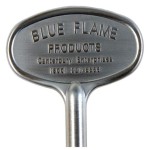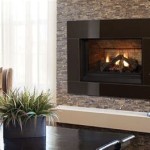Gas Fireplace Insulation: Enhancing Efficiency and Safety
Gas fireplaces offer a convenient and aesthetically pleasing alternative to traditional wood-burning fireplaces. They provide instant heat with minimal mess, making them a popular choice for homeowners seeking both ambiance and warmth. However, a common concern associated with gas fireplaces is heat loss, which can negate some of the energy efficiency benefits. Effective insulation plays a crucial role in maximizing the performance of a gas fireplace, enhancing its safety, and minimizing energy waste.
While gas fireplaces themselves generate heat, a significant portion of that heat can escape through the fireplace structure, particularly through gaps, cracks, and the chimney. This heat loss not only reduces the overall efficiency of the fireplace but also contributes to higher energy bills. Furthermore, improperly insulated gas fireplaces can create unsafe conditions, potentially leading to increased fire risk or carbon monoxide exposure. Therefore, understanding the principles of gas fireplace insulation and implementing appropriate insulation strategies is essential for optimal performance and safety.
Gas fireplaces, though generally safer than wood-burning models, still necessitate careful attention to insulation. The heat generated can radiate outwards, affecting surrounding walls and potentially causing damage over time. Moreover, inadequate insulation can lead to condensation problems within the fireplace enclosure, fostering mold growth and corrosion. By properly insulating a gas fireplace, homeowners can mitigate these risks and ensure the long-term integrity of the fireplace and its surrounding structure.
Understanding the Need for Insulation in Gas Fireplaces
The necessity for insulation in gas fireplaces stems from several factors. First, the metal firebox, while durable, is a highly conductive material. This means that heat readily transfers through the metal and radiates outwards. Without insulation, this heat loss significantly reduces the amount of heat that effectively warms the room. Instead, a substantial portion of the heat generated is lost to the surrounding walls, floors, and the chimney.
Second, gas fireplaces are often installed in existing fireplaces or within framed enclosures. These enclosures, while providing a decorative surround, may not be adequately insulated. Gaps and cracks between the fireplace unit and the surrounding structure allow for significant air leakage, further exacerbating heat loss. This air leakage can also draw cold air into the room, creating drafts and discomfort.
Third, the chimney or vent system of a gas fireplace can also contribute to heat loss. While gas fireplaces utilize a closed combustion system, the vent carries exhaust gases away from the living space. If the vent is not properly insulated, it can act as a thermal bridge, conducting heat away from the fireplace and into the outside environment. This is especially true for metal vent pipes that run through unheated attics or exterior walls.
Finally, local building codes often mandate specific insulation requirements for gas fireplaces. These codes are designed to ensure safety and energy efficiency, and compliance is essential for homeowners. Failure to meet these requirements can result in fines or the need for costly retrofits.
Types of Insulation Suitable for Gas Fireplaces
Selecting the appropriate type of insulation for a gas fireplace is crucial for ensuring both safety and effectiveness. The insulation material must be able to withstand high temperatures, resist combustion, and provide adequate thermal resistance. Several types of insulation materials are commonly used for gas fireplaces, each with its own advantages and disadvantages.
Mineral Wool: Mineral wool, also known as rock wool or slag wool, is a popular choice for gas fireplace insulation. It is made from recycled materials such as rock or slag, which are melted and spun into fibers. Mineral wool is highly fire-resistant, withstanding temperatures up to 2000°F, making it an excellent choice for insulating the firebox and surrounding areas. It also provides good thermal performance and sound absorption. Mineral wool is available in batts, rolls, and loose-fill forms, offering flexibility in installation.
Ceramic Fiber Blanket: Ceramic fiber blanket is another high-temperature insulation material commonly used in gas fireplaces. It is made from alumina-silica fibers and is designed to withstand extreme temperatures, often exceeding 2300°F. Ceramic fiber blanket is lightweight, flexible, and easy to cut and install. It is particularly suitable for insulating the firebox and areas directly exposed to heat. However, it is important to handle ceramic fiber blanket with care, as the fibers can be irritating to the skin and respiratory system.
High-Temperature Fiberglass: While standard fiberglass insulation is not suitable for gas fireplaces due to its low melting point, high-temperature fiberglass insulation is specifically designed for use in high-heat applications. This type of fiberglass insulation is treated with a special binder that allows it to withstand temperatures up to 1000°F. It is available in batts and rolls and can be used to insulate the surrounding walls and areas away from the direct heat of the firebox. However, it is less fire-resistant than mineral wool or ceramic fiber blanket.
Rigid Foam Boards: While not directly used inside the firebox, rigid foam boards, such as foil-faced polyisocyanurate or expanded polystyrene (EPS), can be used to insulate the surrounding walls and framing of the fireplace enclosure. These boards provide excellent thermal resistance and can help to minimize heat loss through the walls. However, it's essential to ensure that foam boards are installed with proper fire-resistant barriers to prevent them from being exposed to direct heat. These materials generally are not placed in direct contact with the fireplace itself, but rather in the framing around it.
When selecting insulation, it's crucial to consider the specific application, the temperature rating of the material, and any local building code requirements. Consulting with a qualified HVAC professional or insulation contractor is recommended to ensure the correct choice and proper installation.
Proper Installation Techniques for Gas Fireplace Insulation
Effective insulation of a gas fireplace requires careful planning and proper installation techniques. Incorrect installation can compromise the effectiveness of the insulation and potentially create safety hazards. Several key steps should be followed to ensure a successful insulation project.
Preparation: Before beginning the insulation process, it's essential to thoroughly clean the area around the fireplace. Remove any debris, dust, or loose materials that could interfere with the insulation. Inspect the firebox and surrounding structure for any cracks or gaps. Seal these openings with high-temperature sealant or caulk to prevent air leakage. Disconnect the gas supply to the fireplace before commencing any work, and ensure that the area is well-ventilated.
Firebox Insulation: The firebox is the area most directly exposed to heat and requires the most robust insulation. Mineral wool or ceramic fiber blanket are typically used for this purpose. Cut the insulation material to fit snugly against the firebox walls, ensuring that all surfaces are covered. Use high-temperature adhesive to secure the insulation in place. Avoid compressing the insulation, as this can reduce its thermal performance. Pay particular attention to sealing any gaps around the gas lines, burners, and other components.
Surrounding Walls and Enclosure Insulation: The walls and enclosure surrounding the fireplace should also be insulated to minimize heat loss. Mineral wool or high-temperature fiberglass can be used for this purpose. Install the insulation batts or rolls between the framing studs, ensuring that they fit snugly and without gaps. Use foil-faced insulation to further enhance thermal performance. Seal any cracks or gaps around the framing with caulk or sealant. If using rigid foam boards, ensure they are properly fireblocked and installed according to manufacturer's instructions.
Vent System Insulation: The vent system of a gas fireplace should also be insulated to prevent heat loss and condensation. Wrap the vent pipe with insulation material, securing it with foil tape. Ensure that the insulation is properly sealed to prevent moisture penetration. For vent pipes that run through unheated attics or exterior walls, consider using insulated vent pipes or adding additional insulation to the surrounding area. Follow all manufacturer's instructions and local building codes regarding vent system insulation.
Safety Considerations: When working with insulation materials, it's essential to wear appropriate personal protective equipment (PPE), including gloves, a dust mask, and eye protection. Follow all manufacturer's instructions and safety guidelines for the specific insulation material being used. Ensure that the area is well-ventilated to prevent the build-up of dust or fumes. Properly dispose of any waste materials according to local regulations.
After completing the insulation process, thoroughly inspect the installation to ensure that all surfaces are covered and that there are no gaps or cracks. Reconnect the gas supply and test the fireplace to ensure that it is operating properly. Monitor the surrounding walls and enclosure for any signs of overheating or other problems. If any issues are detected, consult with a qualified HVAC professional or insulation contractor.
By following these installation techniques and safety precautions, homeowners can effectively insulate their gas fireplaces and enjoy improved energy efficiency, enhanced safety, and long-term performance.
Proper insulation of a gas fireplace is more than a cosmetic upgrade; it's a strategic investment in home comfort, safety, and energy conservation. While the initial cost of insulation may seem like an added expense, the long-term benefits far outweigh the upfront investment. A well-insulated gas fireplace not only reduces energy bills but also enhances the overall value and comfort of the home.
The principles of thermal efficiency apply directly to the performance of gas fireplaces. By minimizing heat loss through conduction, convection, and radiation, insulation ensures that the heat generated by the fireplace is directed where it's needed most: into the living space. This efficient heat transfer translates to lower energy consumption, reduced carbon footprint, and a more comfortable indoor environment.
In addition to energy savings, insulation also enhances the safety of a gas fireplace. By preventing excessive heat build-up in surrounding walls and structures, insulation reduces the risk of fire. It also helps to prevent condensation and mold growth, which can contribute to poor indoor air quality. A properly insulated gas fireplace operates safely and efficiently, providing homeowners with peace of mind.
The growing emphasis on energy efficiency and sustainability has led to stricter building codes and regulations regarding insulation. Homeowners are increasingly required to meet certain insulation standards to ensure compliance and qualify for energy rebates and incentives. Investing in proper gas fireplace insulation not only benefits homeowners directly but also contributes to a more sustainable and energy-efficient community.

Walls Behind Fireplaces Building America Solution Center

Electric Fireplace Insulation An Ultimate Guide Inserts Guy

The Foil Faced Insulation Behind This Fireplace Provides An Air Barrier And Thermal Shield Building America Solution Center

Keith Porter Insulation Fireplaces
Insulating Around Direct Vent Fireplace Hearth Com Forums Home
Gas Fireplace Venting Explained Heat Glo

All About Gas Fireplaces
How To Install Gas Fireplace Insert Heat Glo

Insulation Fireplace

Proper Insulation Doghouse Or Kick Out Doityourself Com Community Forums
Related Posts








